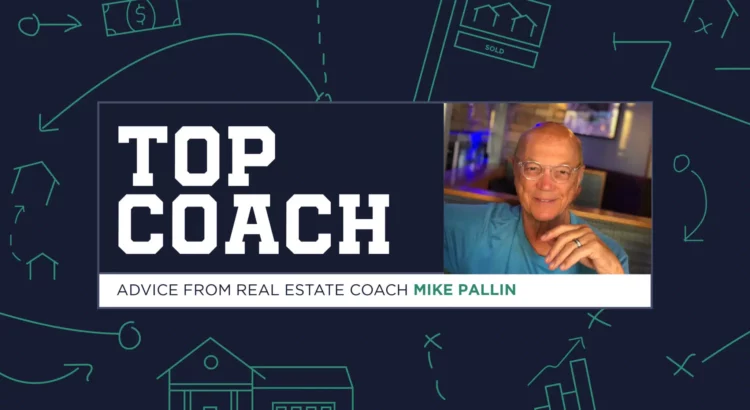By Jenny Sepulveda
Business development is the core of any sales position, but what does business development really mean? Sales is a numbers game. And if lenders know how to play, whether rates go up or rates go down, they will always have business. But to stay top of mind, lenders must also recognize their actions — and track them. For those of you that have been in the business for a while, ask yourself why you stopped doing the things that you did when you first started working. Pivot and start implementing strategies that will help you work smarter, not harder.
It all starts with creating a business plan.
When writing a business plan for the year, you will need a step-by-step plan with measurable actions that lead to your desired outcome. For example, if your desired outcome is to close $50 million in loan volume, consider how you are going to get there. What systems and procedures do you need to implement to reach that goal? How many referrals do you have through clients and agent partners?
If you want to plan for the year ahead, you should also analyze where you finished last year. What are your expectations for growth in volume? What activities drive ROI?
Ask yourself these questions
- What percentage of my referral business is from agent partners versus clients?
- Where did this business come from?
- Who are my referral sources?
- What is my average loan size?
- Do I have any social media, events or marketing plans?
- How many events did I host, and how many people attended my events (existing partners versus new)?
You will then need to review and measure these actions daily, weekly, monthly and quarterly. This will help you identify whether you are on track, and if not, how you can change things. Be consistent to be successful.
One of the keys to staying consistent is organizing your database! Know who your biggest cheerleaders are, and analyze month to month: Who are these people? Organize them further into groups: Are they clients? Are they referral partners? Did they attend an event you hosted? What percentage of them send you business? You must always be hunting for business no matter what.
To maintain those relationships, remember the two golden tickets of opportunity: your phone and social media. It’s all about leveraging those contacts. For example, when was the last time you really looked at your phone? How many contacts do you have? How many people are following you on social media? Who are these people? What categories do they fall under (clients, consumers, referral partners, etc.)? When was the last time you contacted them? Your social sphere is low-hanging fruit for any lender.
Using social media
Think carefully about all your social media accounts. Your social media is a valuable resource for finding leads instead of having to buy them. On social media, you can make new connections every time you log on. Back in the day, we had to knock door-to-door and hire a marketing person to assist in our success. Now, a lender has an entire database of free marketing in the palm of their hand. Social media also provides a space to advertise any events or special initiatives.
Each month you should be planning different events or marketing strategy. What types of events are you hosting? Do they correspond with upcoming holidays? Get creative! You can also use fun taglines for your events. Instead of saying, “Come to our happy hour,” you can say “Come to our Cinco De Drinko!” Going that extra step will help your parties shine — especially on social media.
From there, it’s important to analyze online engagement. All the major social networks, from Facebook to Instagram to LinkedIn, offer analytics with demographic information about who interacts with your account. Review this data monthly, taking note of engagement, click-through rates and new followers. As a lender, you are a business within a business, so you must identify your brand. That requires knowing who your target audience is.
Knowing your target audience
A perfect example is Gatorade. Early on, the Gatorade company identified its desired target audience: athletes. The company had every athlete from every sport market their brand of “Thirst Quench.” Gatorade was present at sports games, on athletic clothing, in commercials and in athlete interviews. Gatorade branded the product to who their target audience would be. You, too, are a brand. And you are branding your business. Who is the human person behind the lender? What is a subject you can talk about for 20 minutes that is not mortgage? People want to know who you are. Your personality online and in marketing needs to be just as good as it is in person.
When posting, your goal is to deliver high-quality, relevant content that engages with your audience, establishes trust and drives business — but to break through all the noise, you need a solid social media plan. Designing an effective plan may mean reinventing your current social strategy. Whatever you share should align with the interests of your audiences and contribute, overall, to business value. Have you done a 30-day calendar? You should be planning and creating content ahead of time. It is important to map out all content for the month. How often will you post? You can add motivational posts, money-saving tips, business tips, etc. You can also analyze what posts do well. What earned the most views? Which post saw the most engagement?
Understanding your social channels
Do not limit yourself to work-related content, either. Content should be engaging and personal. The ability to create real human connections is the key benefit of using social media for business. Social posting can humanize a brand, and consumers like to support brands they find relatable. By always presenting a mix of business and personal material, you will keep your page entertaining and informative! Your followers will be glad to see your new, fresh content in their feeds — keeping you top of mind. When it comes to personal content, the opportunities are endless. You can post a “song of the day” on your Instagram story or a Spotify playlist. Behind-the-scenes photos and videos are another fun option, along with favorite hobbies, upcoming events, giveaways and contests, home decorating tips, homes listings, happy client closing photos … and more!
Take LinkedIn and TikTok, for example. LinkedIn has 260 million monthly users and remains the best platform for professional networking. It’s a great place to find top talent and position yourself as an industry leader. It is all about networking and making new connections. It shows not only a person’s current position, but also their work history and skill set, illustrating what asset they might be to your business.
Meanwhile, TikTok is dominating the social media landscape by providing users with reels of easy-to-make content. This platform attracts younger consumers who are the next generation of homebuyers. It is not about connecting with others directly but, rather, continued relevancy. People who like similar content to yours will automatically be directed to your page and clips. So, consider: Do you have prerecorded videos to post? Video marketing is a terrific way to showcase your personality to your audience, keeping you face to face with the people that matter the most. BombBomb, a software that creates video messages, is another option to help liven up your social presence.
After all, this business is all about human connections. As a lender, you are helping people with the biggest purchase of their life. This purchase is emotional. It is something they will always remember. And people like to work with people that they like. Throughout the homebuying process, clients will be looking for someone they can relate to and, most importantly, someone they trust. Your social media presence can certainly help. But becoming a successful lender also takes persistence. It requires careful planning, then tenacious execution. Once you have thought through a strategy, creating measurable goals that serve as milestones is key. Your grand vision will become the catalyst that turns dreams into reality.
Jenny Sepulveda is the executive vice president of sales coaching and development at Guaranteed Rate. She leads a team that assists loan originators across all 50 states in growing their overall business.


